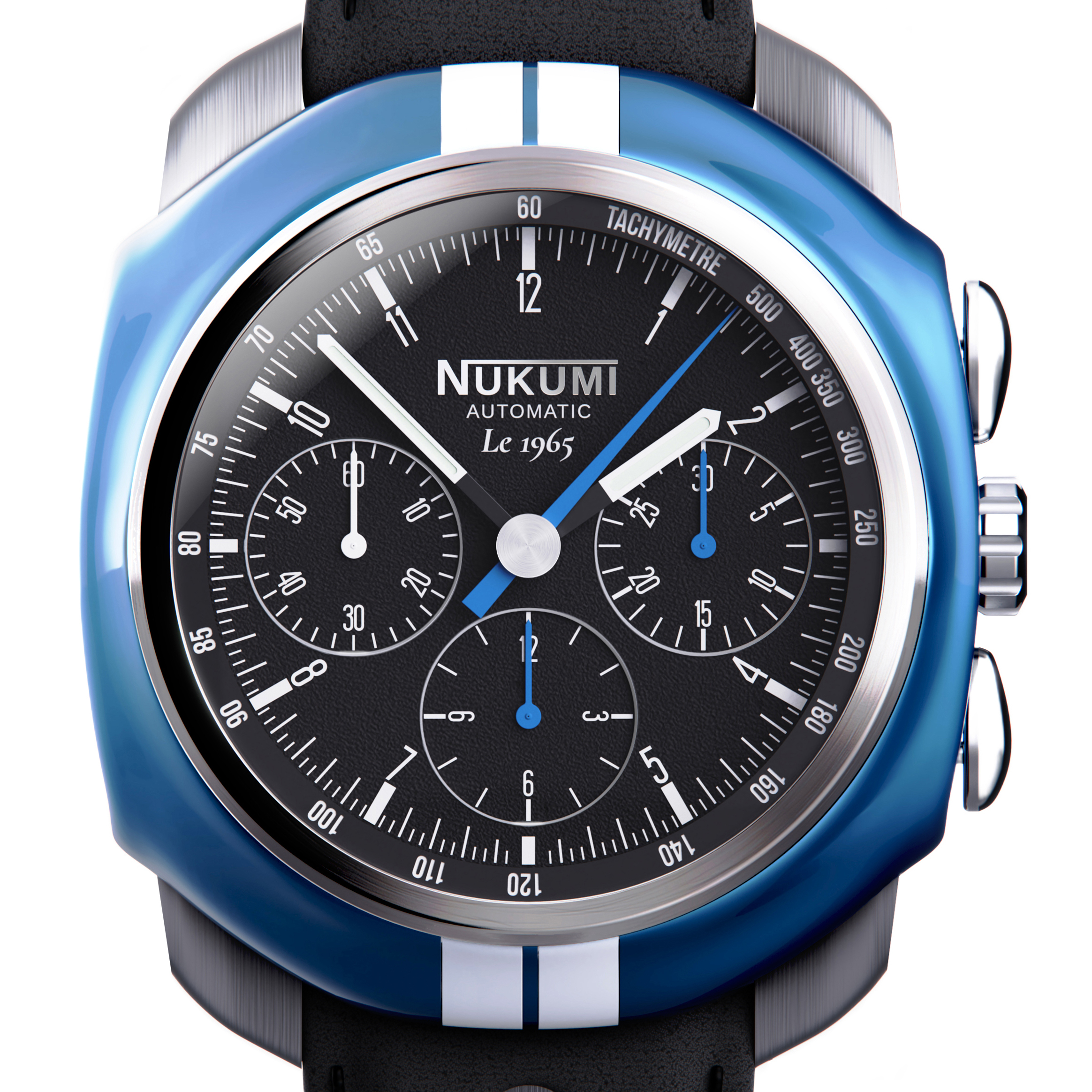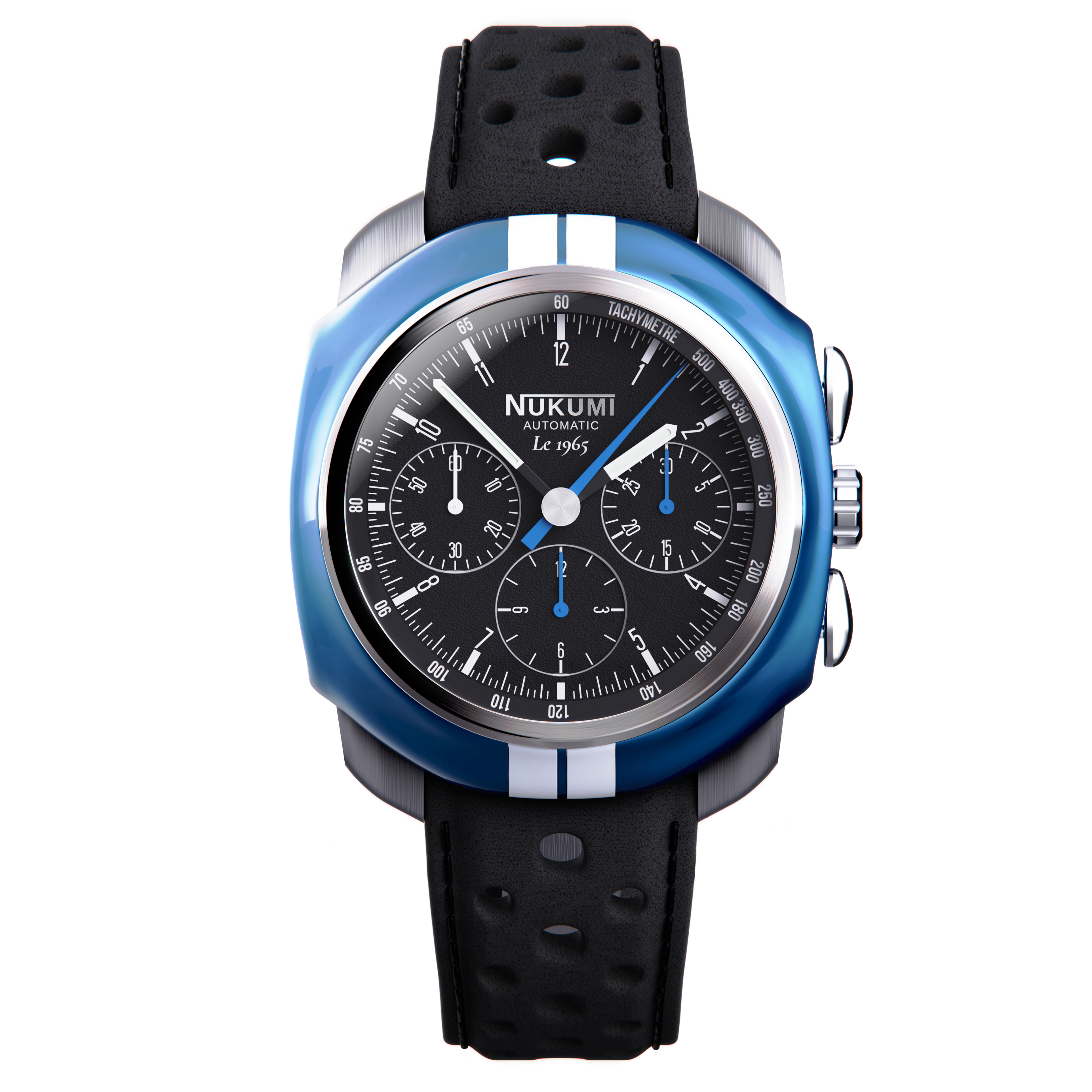
Le1965
Extra Super duralumin+Hard Painting
Power reserve: 48 h, 28800 vph
Skeleton movement
Realisation of new expressions and case structures
This watch brand was established in 2024 by designer and engineer Shinji Nukumi. The reason for the birth of this brand is to try out new possibilities and expressions for watches. This first watch is packed with two major advances and one concept.
Watches that respond to and represent motor sport.
1: Realisation of painting technology for the case
Traditionally, the main focus of watch cases has been on the texture of the metal. However, this watch aims to provide new value by applying a painting to the case, just like cars and other products. One of the reasons why paintings have rarely been used in the history of watches is the strength of the painting. The Mohs hardness of a typical clear painting is 2-3, making it vulnerable to scratches and unsuitable for everyday use on a watch.
This new watch uses the latest high-hardness painting, which achieves a Mohs hardness of 5.5, and through a unique formulation, it also meets the ISO 1413 impact resistance standard (drop test from 1m). This painting has a hardness equivalent to glass and stainless steel, and can withstand scratches and friction during sports and everyday use. This technology allows for a wider range of expression in sports watches, bringing about new diversity.
2: Realisation of a new frame structure
The mainstream structure of a typical watch case is a monocoque structure, where the outer and inner shells are integrated, similar to the structure of modern cars. However, in this watch, the outer and inner shells are separate, and the lugs are also separate. This structure is similar to the frame structure of race cars in motor sports such as Le Mans.
The frame structure has the following advantages:
• The separation of the outer and inner shells makes it difficult for external shocks to be transmitted directly to the internal structure and movement. This mitigates the large shocks that occur during sports.
• By separating the outer shell, it becomes possible to apply a painting to the outer shell, while still maintaining the dimensional accuracy of the stainless steel inner shell.
• By using the outer shell made of lightweight, high-strength aluminium (extra super duralumin), which is also used in aircraft and race cars, we have achieved a 40% weight reduction compared to a stainless steel structure, bringing the total weight down to 90g. This makes it suitable for use when driving, where the weight of the watch is a concern.
• By separating each component, it becomes possible to replace or repair individual parts even if they are damaged, making it possible to use the watch sustainably and over the long term.
A7075 extra super duralumin is lightweight and strong, but it has the disadvantage of being less resistant to corrosion. This problem was solved by improving corrosion resistance of A7075 by means of a paint coating.
3: A design concept for motorsports.
The frame structure and painting technology are reminiscent of the Le Mans race cars of the 1960s in motor sports. The appeal of the Le Mans cars of the 1960s was their robustness, thanks to their frame construction, which could last for 24 hours, and their beautiful design, thanks to their painted aluminium bodies. The Le1965 follows the design lines of the 1965 Le Mans car, and has achieved the same frame structure and painted aluminium body as the 1965 car.
The movement used is the Valjoux 7753. This is a historic movement that carries on the design of the Valjoux of the 1960s. It is the perfect movement to evoke the Le Mans of the 1960s. For this movement, the rotation has been revised by placing a uniquely designed router. The chronograph buttons are also sensibly easy to press when driving, and the chronograph buttons are well designed.
Synergy
This watch combines the strengths and weaknesses of frame structure, painting, stainless steel, and aluminum like a puzzle, creating new synergy. It is a completely new watch that maximizes the performance characteristics of each material.



